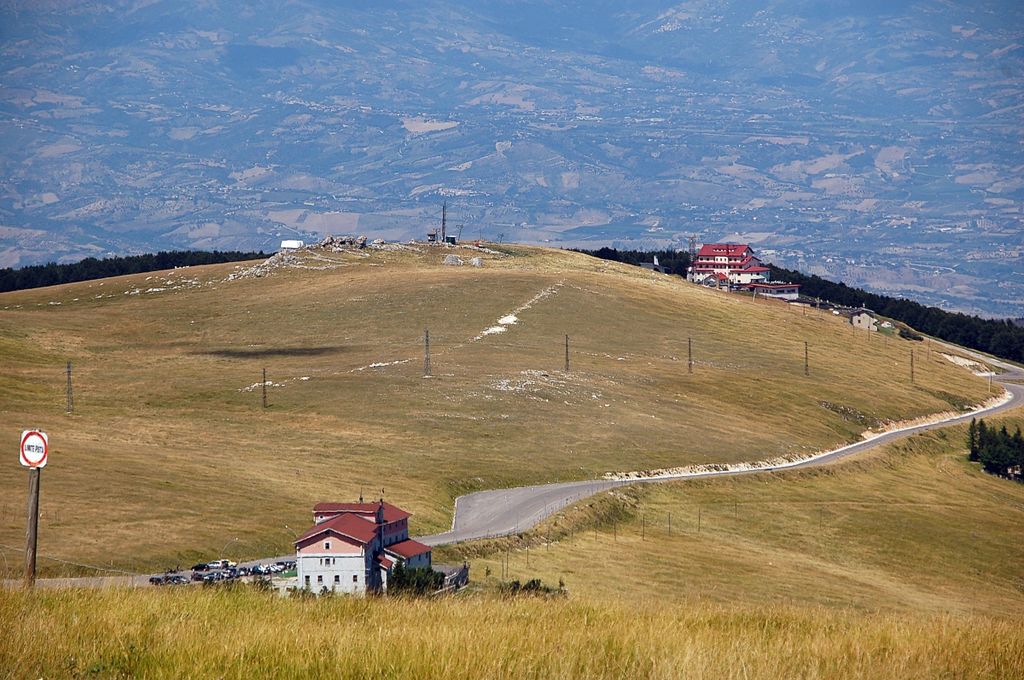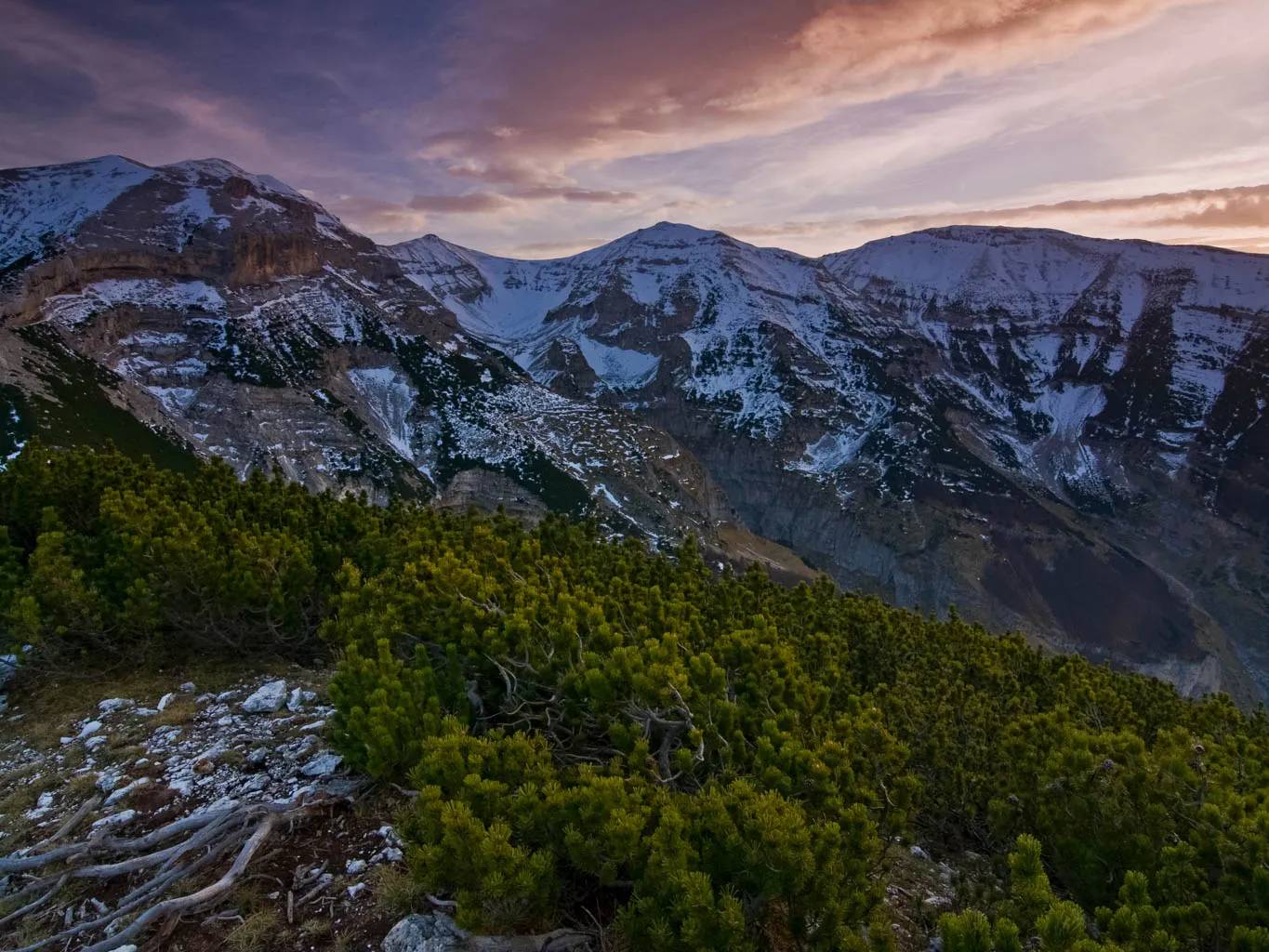The Cammino di Celestino in the Majella National Park, in Abruzzo, is one spectacular and demanding 90 km walking itinerary from Sulmona to Serramonacesca in the province of breaking latest news, to be covered ideally in 6 stages. The Way as it has been designed since 2018 partly follows the historic Sentiero dello Spirito (trail sign S) however excluding the two demanding stages of the summit of Monte Morrone (2,061 m.) and the steep Rava dell’Avellana in the Orfento Valley: Today it starts from the Celestinian Abbey of Sulmonaand following the “official” stages, we stop in Pacentro, Roccacaramanico, Caramanico Terme, Roccamorice and Lettomanoppello before reach the Abbey of S. Liberatore a Maiella in the municipality of Serramonacesca.
Although it is about a Path and not a trek, it is however a mountain path, for which you need adequate equipment and a minimum of hiking experience and training. In addition to the GPX tracks and dedicated trail markers, the Cammino di Celestino is also marked on the Park’s Official Hiking Map.
The Path of Celestine, dedicated to the Pope who “made the great refusal”
The Celestine Way is dedicated to the Pope who “made the great refusal”, the already poor hermit Pietro da Morrone that in 1294 he was elected the 192nd Pope of the Catholic Church with the name of Celestine V and that Dante in the Divine Comedy places among the slothful of the Antinferno for abandoning his office also under pressure, or suggestion, from Cardinal Benedetto Caetani who succeeded as Pope Boniface VIII. Pietro da Morrone Celestino V he was a revolutionary Saint and Pope for the timeand is a substantial part of Abruzzo’s identity and religiosity.The Way of Celestine V it probably retraces the ways that Peter used to move from one hermitage to another during the hermitic phase and which he traveled in 1273 to reach the Via Francigena and the Council of Lyon in France.
Along the path of the Cammino di Celestino they cross 7 rock hermitages, 2 abbeys, a site of tombs ru
pestri, 2 archaeological sites and 10 municipalities (Sulmona, Pacentro, Roccacaramanico, Caramanico, Decontra, Roccamorice, Abbateggio, Lettomanoppello, Manoppello and Serramonacesca) always proceeding on the official paths of the Majella Park with very few and short stretches on dirt or secondary roads.
It is therefore a mountain path that combines the landscape and naturalistic interest with the historical and spiritual interest rooted in these lands of Abruzzo.
The stages of the Celestine Way
Officially there are 6 stages of the Cammino di Celestino, with precisely the two possible variants of the historic Path of the Spirit. However, they are all stages classified as E (Hikers) or EE (Expert Hikers, sometimes with equipped sections) and which therefore require habit of mountain walking, hiking skills, good physical condition and adequate equipment. The paths are passable only on foot, the end of the stage is always expected in inhabited places where you can find accommodation for the night (except for the two variants where, however, you can find unguarded bivouacs and shelters). at theMajella Park Authority (Badia Morronese – Via Badia, 28, 67039 Sulmona (AQ)) it is possible to collect both the Pilgrim’s paper to have the Official Hiking Card of the Park stamped at each stage. Also predicting gods equipped sections and passages at high altitude it is also advisable to inquire in advance at the Park Authority if all sections of the path are actually open and passable.
Given the quotas reached and the technicality of some passages the Cammino di Celestino is not a winter path: the best period is from spring to early autumn, taking into account that in summer it can get really hot, while in the transitional seasons it is not unlikely to find snow at the highest altitudes. In the middle of summer, on the other hand, it is necessary to carefully plan the water supply, because it is true that numerous springs are signposted along the route, but during the summer it could happen that there is no water.
Finally it may be useful to know that Sulmona is easily reached by train from breaking latest news and from Rome and from the railway connections for L’Aquila, Rieti and Terni to the north and for Isernia and Naples to the south. From Serramonacesca there is only one bus service to breaking latest news and it is advisable to inquire in advance about timetables and rides.
Stage 1: from Sulmona to Pacentro through the Peligna Valley (13km)
The beginning of the Cammino di Celestino is at the abbey of Santo Spirito al Morrone, or Celestinian abbey, in Sulmona from where you start towards Mount Morrone in the direction of the Hermitage of Sant’Onofrio al Morrone. From here, in 5 hours, between agricultural fields and country roads, you get to Pacentro.
Stage 1 – Variation: from Badia Morronese to Caramanico to the summit of Mount Morrone
This is one of the 2 more technical and demanding variations, with the signposted route for EE (Escursionisti Esperti) which allows you to cut stage 2 of Pacentro – Passo San Leonardo. Following the route of the ancient Sentiero dello Spirito, from the Hermitage of Morrone you reach that of San Pietro and then you pass by the summit of Monte Morrone (2,061) and descend to the Laccio della Madonna refuge along the opposite slope. From here you reach Caramanico Terme along the paved road for a total of 9 hours of walking.
Stage 2: from Pacentro to Caramanico Terme via the San Leonardo Pass (1293 masl)
With this second stage of 6.5 hours of walking for a total of 19 km, you start from Pacentro, arrival of the first stage, and go from the Peligna Valley to the Orta Valley, bypassing the Morrone, which allows you to face the climb in a more gradual up to Passo San Leonardo from which you can enjoy a magnificent view of the Majella massif. From the pass, the path is all downhill, in the presence of Monte Amaro and the Gran Sasso chain up to the path to Caramanico.
Stage 3: from Caramanico Terme to Decontra through the Orfento Valley
The third stage of the Cammino di Celestino entirely goes up the valley of the Orfento river up to the village of Decontra (810 m – refreshment and accommodation). A first part downhill to the San Benedetto bridge corresponds to a second part immersed in the beech wood with a slight climb up to the passage equipped with a steel cable on the ledge. It is one of the more technical passages, marked EEA, from which you descend to the San Benedetto bridge from which you head to Decontra in a total of 18 km.
Stage 4: from Decontra to Mammarosa through the Maielletta meadows
The fourth stage alternates sections in beech and maple woods with others in open prairies, with spectacular views over the Ofanto valley. From Decontra go up to Pianagrande from where you take a detour to the Blockhaus, passing through the “Di Marco” refuge and then crossing the Majelletta meadows up to the path that leads to the refreshment point). They are 24.5 km with a considerable difference in altitude and some stretches exposed to the hermitage of San Giovanni.

Ra Boe / Wikipedia, CC BY-SA 3.0 DEvia Wikimedia Commons
Stage 5: from Mammarosa to Macchie di Coco for Macchia di Abbateggio
From here you go up through the meadows and then down into the beech forest reaching the hermitage of Santo Spirito a Maiella with beautiful views of the Vallone di Santo Spirito and the Gran Sasso. From the hermitage you continue to descend, cross the Macchia di Abbateggio and then again in the Vallone di San Bartolomeo to then go up again in Coco maquis. It’s 13 km, many of which are downhill, with a couple of uphill stretches on an asphalted surface.
Stage 5 – Variation: from Decontra to Macchie di Coco via Pianagrande and Valle Buglione
The second variant of the Cammino di Celestino on the steps of the Sentiero dello Spirito is the one that allows you to go directly from Decontra to Macchie di Coco in 22 km, passing through Pianagrande and Valle Buglione. It is a long, physically demanding stage, with a considerable difference in altitude but which in practice allows you to cut 1 day’s walk passing through Pianagrande, the hermitage of San Giovanni, that of Santo Spirito, and the valley of San Bartolomeo.
Stage 6: from Macchie di Coco to Serramonacesca through the Vallone S. Angelo
The last stage goes from Macchie di Coco to the Abbey of San Liberatore in 13 km. The first stretch of paved road leads to the Acquafredda hill, from here the path descends to Fosso Sant’Angelo di Lettomanoppello with the walls of the Grotta Sant’Angelo. From here, go up until you can see the sea in the distance and then go down to the hermitage of Sant’Onofrio di Serramonacesca, from which you continue downhill to the Abbey of San Liberatore.
Information at the Majella Park Authority
For more information, contact the Majella Park Authority or download the dedicated brochure from the Abruzzo Turismo website.
READ ALSO: Majella with children: 6 things to do for an exhilarating holiday
Advertising
